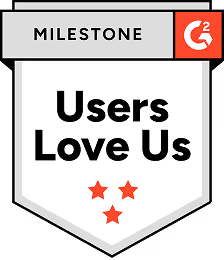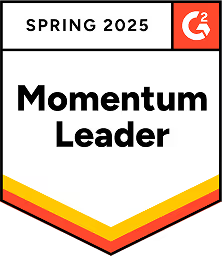3 Ways Sales Enablement Changed in 2021

Effective sales enablement is all about providing salespeople the tools they need to succeed. But what happens when the metrics of success undergo a worldwide shakeup? To say that 2021 ushered in some new “sales enablement trends” is an understatement. It wasn’t a year of trends; it was a year of DNA change.
2020 was a black swan. Old playbooks became coffee cup coasters, and traditional sales cycles were replaced with hyper-digital interactions. So how has this changed sales enablement?
Pretty much entirely. In 2021 we were saying welcome to the Renaissance. Here’s what you need to know about how 2020 and 2021 changed sales enablement.
2020 Accelerated Sales Enablement and 2021 Was the Catalyst of the New Era
The world was upended by the events of 2020. How we interacted, purchased, lived, experienced, and engaged underwent a significant change, and it was one of those once-in-a-century changes that was more than a blip; it was an earthquake. According to Accenture, 77% of CEOs admit that 2020 “fundamentally” changed the way their company will “engage and interact with its customers.”
Despite these rapid-fire changes, organizations are still faced with a unique opportunity. There has never been a better time to rethink your sales enablement strategy. COVID-19 was “The Great Accelerator.” Those trends that had been on the back burner boiled over, and still, in 2023, failing to capitalize on sales enablement tech puts your organization at the very real risk of failure.
Let’s be honest: sales enablement hasn’t kept its promise. 60 percent of organizations have resources dedicated to sales enablement. Yet 57% of sales reps don’t hit their quotas. Worse yet, 93% of customer experience initiatives outright fail. Something is wrong.
The big bang of sales enablement has been reduced to a whimper. To put it simply, sales enablement strategies haven’t adopted modern selling techniques, embraced technological changes, and met the modern demands of today’s customers.
The goal of sales enablement has always been to give sales reps the strategies, tools, technology, and resources they need to capture more leads. That hasn’t changed. But many sales leaders still haven’t positioned sales enablement as an ever-evolving catalyst in their organizations. They’re in a rut. They’re using the same tools, the same platforms, and the same technology.
In 2023, we’ll continue to see sales enablement accelerate to meet that great promise of bigger, smarter, and more effective sales. Adopting campaign automation platforms, embracing technology that helps you effectively target the right people at the right place and time, and investing in platforms that can deliver the perfect content to your buyers isn’t a risky, mid-horizon investment; it’s a necessity.
Sales leaders are notoriously resilient. They know an opportunity when they see one. It’s ingrained into their soul. So, when a HubSpot survey predicted that 40% of sales leaders would fail to meet their goals in 2021, the resourceful sales leaders didn't sit down and give up. The rush to adopt modern and meaningful technology to help retool existing strategies and processes was on, and virtually every healthy sales enablement team was, and still is, on the hunt for transformation.
Sales Enablement Must Consolidate ASAP

Fueled by remote work, an increasingly sweat-worthy threat landscape, and an internally-burning desire to reduce redundancies and idle time, sales enablement tech is starting to consolidate. Do we really need a 15-tool stack to enable our sales teams? The average worker toggles between a frankly ridiculous 10 apps an hour — costing them 32 days worth of productivity each year.
The question is: how can you bring the sales tools you need to one, two, or even three windows. Currently, sales teams have massive stacks. From market research tools, persona tools, and tracking tools to campaign creation platforms and messaging apps, trying to reach out and make an impact on a single customer often happens across a smorgasbord of interfaces.
We all know how it happened. Massive, capital-intensive tech companies produced awesome, do-it-all solutions. We all invested in them. Then, suddenly, we realized that we all had different needs. So, we dropped the larger platforms, put our money into point solutions, and built our own stacks. Suddenly, we all have gargantuan tech stacks that force sales reps to spend more time browsing through interfaces than executing sales.
Something has to give. Sales reps waste half-a-billion hours of time on poor software, spend 45% of their time on poor leads, and blow 5.5 hours a week simply entering data into sales tech. That expensive, patch-worked tech stack isn’t working. And we all know it. Continuing the progress spurred by 2021, 2023 is the year sales enablement consolidates. You don’t need an arsenal of tech to make sales. You need a few hyper-effective, multi-purpose platforms. And they need to have automation.
After all, can we really call it sales “enablement” if it disables salespeople by forcing them to waste time in interfaces? Tech should be transformative — not burdensome.
Experience Will Drive the Lion’s Share of Conversions
It’s time to rethink sales enablement. Long-held as a beacon of revenue, sales enablement has traditionally been positioned as a conversion tool. It’s a way to enable salespeople to convince and convert. But as we solidify a renaissance of customer experiences and expectations, sales enablement is slowly blending with customer enablement.
The customer experience underpins every sale. We always say that modern sales should compel, not convince. In fact, we would venture to say that sales enablement shouldn’t even focus on conversion. Today’s conversions are a byproduct of delivering a valuable experience. Did you know that two-thirds of companies now compete primarily on the customer experience? Walker predicted that CX would overtake price and product in 2020. They had no idea how right they were.
People aren’t a dime-a-dozen. They’re unique. And they have unique problems, challenges, and missions. Sales enablement should lean into those individualities to deliver campaigns, messages, and interactions that are genuine.
Are you using evidence-based insights to drive sales? Or are you simply on autopilot? To be honest, economic downturns are fuel for sales departments. Sales leaders are beginning to flex muscles they haven’t used since the 2008 recession. And that’s great! But the landscape has changed since then. Customers are different. Frankly, they expect more than dog-eat-dog sales battles with promise-them-the-world smooth talk.
You need to reach your customers when and where they want to be met. They need compelling content that is custom-coded for their persona. And you need a gentler follow-up strategy that helps you keep tabs on critical clients without drowning them in unnecessary fluff.
Lately, major companies and marketing agencies like Accenture have been calling for a new wave of CX — BX. This is the business experience. How can you reposition your entire business to deliver value-driven experiences in the most customer-centric way possible? Apparently, BX businesses outperform CX-focused companies by over 6x. So, there’s tangible value in turning your attention towards experience.
In other words, how can sales enablement help teams build better experiences, not grab more quick sales? Play the long game. Build comprehensive personas, deliver exceptional and unique campaigns, and reach out to customers at those perfect micro-moments during their sales journey.
2023: The Solidification of the New Era
It’s not often that a global-scale crisis reinvents the way we, as humans, fundamentally operate. 2021 may have been the most important year for sales, but 2023 is ready to define its legacy. There will be winners, losers, and plenty of stalemates. If you want to hang out in the former category, you need to completely retool your sales enablement strategy. It’s time to embrace cutting-edge technology, shed burdensome tools, and imagine a sales world where the customer experience is king. We’re ready, are you? Contact us to learn how Regie can help you become a differentiator in the new era.
FAQs
Read more posts
View all BlogsNeed more help?
If you still have questions, make sure to check out our Help Center: there, you'll find all the tips & advice you'll need to get your team up & running with Regie.ai.









